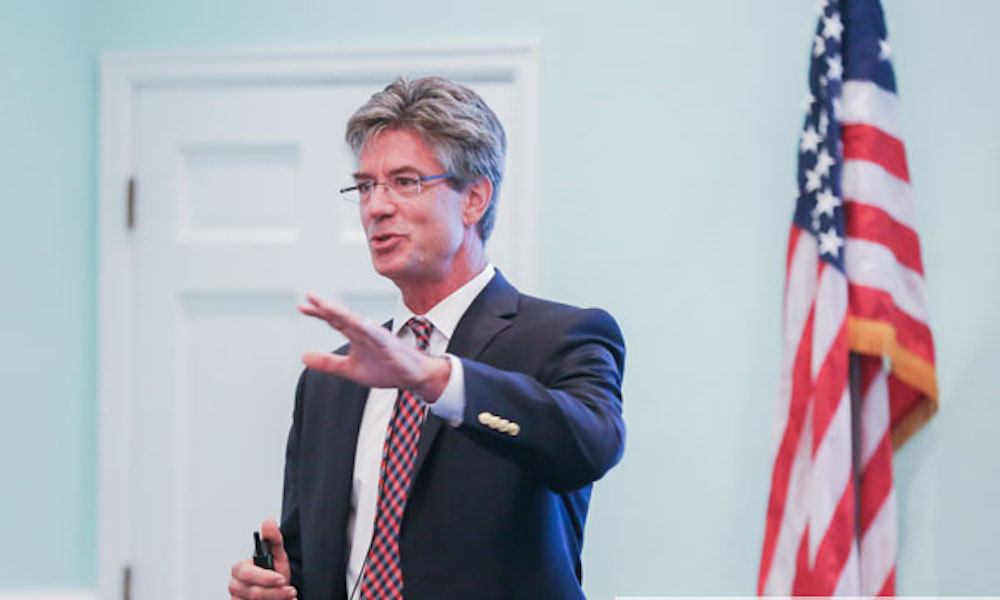Balancing Growth and Capacity in Your Financial Services Firm
by Commonwealth Financial Network
 Are you and your staff short on time? Has a flat service model resulted in too many client meetings, new clients who are just not the right fit, and busy days that seem never-ending? If any of these scenarios rings true for your practice, something needs to change! Specifically, an upward shift toward increased scale and capacity may be in order. But how?
Are you and your staff short on time? Has a flat service model resulted in too many client meetings, new clients who are just not the right fit, and busy days that seem never-ending? If any of these scenarios rings true for your practice, something needs to change! Specifically, an upward shift toward increased scale and capacity may be in order. But how?
To help you develop a service model designed for balancing growth and capacity in your financial services firm, we’ll look at the story of Nick Wilkins, AIF®, managing partner and cofounder of Blueprint Wealth Advisors in Chicago. In the past four years, Wilkins has grown his production by an average of 17 percent. What’s more, Blueprint as a whole has managed a similar growth rate because of a service model designed to optimize productivity with growth in mind. But it hasn’t always been that way.
When Blueprint joined Commonwealth in 2012, growth was a priority. But as growth accelerated quickly, it was a challenge for the group’s service levels to keep up. To help the team scale their client services, our Practice Management team recommended they try out our Scale and Capacity tool. This tool is designed to help our affiliated advisors uncover their ideal client profile, as well as household return on assets, top referral sources, service model optimization, and household profitability. When Wilkins and managing partner Ryan Evans completed the tool, Wilkins was surprised at the results:
We discovered that half of our clients generated about 3 percent of our revenue. Honestly, we were a bit shocked by that. The real problem was not having a clear minimum. We took on everybody, and not everybody was the client for us.
This realization led Blueprint to set a minimum—but the firm had trouble sticking to it. After all, saying no to a prospective client is difficult for any advisor. Here's how Wilkins describes it:
Ryan and I talked through it and set the minimum at $500K in AUM. We set our minimum fee to roughly $5K. We are happy to meet with and educate a client with $100K to invest. Ultimately, we will leave them in a better place, and they will opt out of our fee, which is really them saying “no” to us. This leaves the door open for the client to come back in the future because we’ll discuss our services and the clients we work best with.
This decision was a leap of faith that has paid off. Politely declining to work with smaller clients has productivity benefits in the short and long run—because it keeps the firm heading in the right direction. According to Wilkins, you have to be as enthusiastic in saying no as you are in saying yes:
You are really freeing up yourself and staff when you say no. Plus, it’s fun and interesting to work with people with complex needs—and that requires a certain type of client. We are excited to work with folks who take our advice and have all their assets with us. We even say no to people who do not fit the culture or resist our process. With that, we have said no to people who more than meet our minimum.
To be sure, culture is hard to create and easy to lose. But bringing on the right clients energizes staff and helps maintain what you've developed.
To further strike the balance between growth and capacity, Wilkins and his team review the Scale and Capacity tool on an annual basis to assess the profitability of service activities. Wilkins notes that 60 percent of time goes to the client meetings that are critical for getting out in front of client needs and goals:
We have learned service is of utmost importance for keeping clients happy and coming back. That means going the extra mile for clients whenever possible. However, too much proactivity can be unprofitable—a balance needs to be struck. Giving the same level of service to every household isn’t scalable or sustainable. To be proactive, we were sold on the fact we were going to meet with clients twice a year. But for some clients, it was forced. We didn’t have anything to talk about.
As a result, the firm categorized clients into service tiers. Wilkins said the biggest shift was moving what the firm considers C and D clients to one phone meeting per year:
We spend less time chewing the fat, and we get right to business. Client meetings can take up too much time if you let them. Now, the calls are much more productive. Roughly 80 percent of our clients are the largest, the As and Bs, and that’s where 80 percent of our time should be focused. It costs too much to replace those clients.
Blueprint also created an organizational framework for review season, so A and B clients have two reviews per year. Wilkins explains the general process, which may fluctuate depending on client preferences:
We go through retirement planning in the spring and cover progress of financial-goal planning in the fall. In April or May, we sit down to make sure our clients feel comfortable knowing they are on track to retire.
Most A clients only want to meet once a year, and we will let them opt out. C and D clients will, at minimum, get a phone call once per year in the fall. For new clients, we have an onboarding process, then a 45-day review before adding that client to the spring/fall reviews.
The Commonwealth advantage. To help Blueprint and other firms make the most of these client meetings, Commonwealth developed the Client360°® Goals tool, available on our comprehensive technology platform. It helps our advisors deliver what-if scenarios pertaining to investments, retirement, and estate planning, all in a time-efficient manner.
Team effort. Blueprint also wanted to take steps to improve service consistency. Wilkins explains how they established a service team e-mail so that nothing falls through the cracks:
When clients leave messages, we have a group of individuals who can respond. Because we are heavy on the service side, our service team is ready to help a client in any way we can.
Plus, having the right team and processes in place ensures that the advisors’ time is focused on revenue-generating activities. And because of the strong group emphasis on the scale and capacity effort at Blueprint, the firm has the diversity in skills to meet business needs.
Agenda items. Another piece of the puzzle was putting those skills into action when meeting with clients. Blueprint sets out with a goal to educate clients to the point that there are no big surprises. Wilkins says this starts with setting the agenda:
We have a baseline agenda that we tweak for each spring and fall review depending on what is going on with the client and where they are in the process. The key for me is, before I even show them the agenda, I always give clients a chance to talk about what is on their mind. Our team helps us prepare for our meetings with quite a bit of detail but understand sometimes clients will come in with some specific questions or financial items they want to discuss. They might even share a story that can lead to a client introduction.
Technology. Expanded use of technology tools has added to the firm’s efficiencies. The group heard about the Smartsheet app, a work management tool, during a Commonwealth event, and it’s become an essential part of the practice.
It’s how we keep track of everything. In our Monday team meeting, everyone goes through the sheet to tag responsibilities. This sets up our week for meetings or any prep work.
Coming out on the other side of the capacity challenge, Blueprint is now a firm with scaled operations to support its focus on growth. Wilkins dealt with a big shift from working in a company to starting one of his own. Now he has a book of business that is both a practice and a firm. It was not all roses as he transitioned. But developing a partnership with Evans, securing the right staff, and facing client challenges were all part of the expansion process. In his own words, “Finding the right people and setting up the company with the right infrastructure was most critical. Once we started taking time to work on the business not just in the business, things really started to change for the better.”
Has your firm faced a capacity challenge? Do you "just say no" to certain prospective clients? Please share your thoughts with us below!
Commonwealth Financial Network is the nation’s largest privately held independent broker/dealer-RIA. This post originally appeared on Commonwealth Independent Advisor, the firm’s corporate blog.
Copyright © Commonwealth Financial Network

















